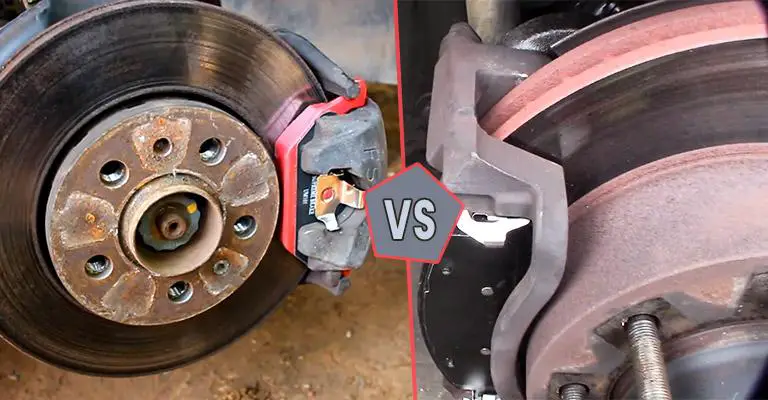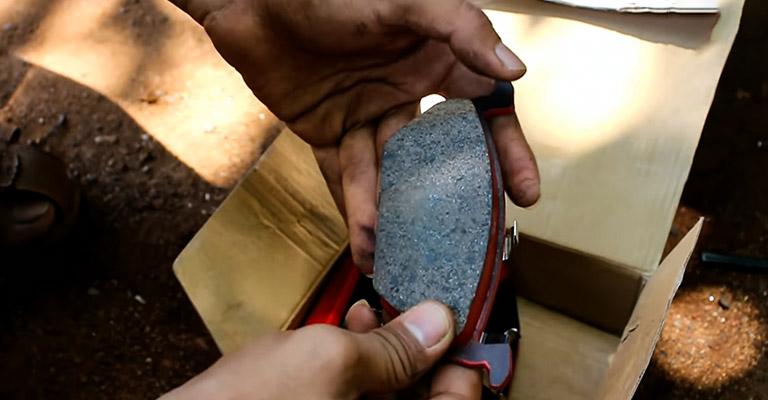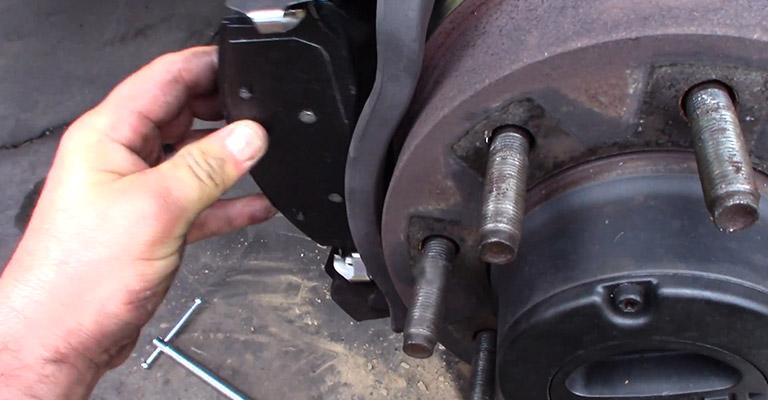Ceramic brakes are famous for their durability, low noise, and the ability to eliminate dust pollution whereas a metallic brake is good for its low price, heat conductivity as well as improved braking performance. So, we need to go through a detailed discussion and find out the differences between these two.
Those of you who use cars often have a very common question and that is which brake pad would be better for my car? Though the question is simple, the answer is quite complex because there are numerous types of brakes in the market and each is promoted as being the best.
Among all the brake pads that are more prevalent and popular, ceramic and metallic ones come first. But if asked which of these two will be best, then perhaps everyone will be immersed in a sea of thoughts.

Contents
Types Of Brake Pads
There are a few different types of brake pads that can be used on cars. Based on the working methodology –
Friction Pad
The most common type is the friction pad, which uses metal to create a barrier between the car’s rotors and the road. This prevents the brakes from slowing or stopping your car as quickly.
Ceramic Disks
Other types of pads include the ceramic disc, which uses heat and pressure to stop your car.
In general, there are four types of brake pads.
- Semi-metallic
- Non-asbestos organic (NAO)
- low-metallic NAO
- and ceramic
Semi Metalic
Semi-metallic brake pads use metal plates to slow down the car’s movement. These brakes work well on hard surfaces such as roads and parking lots but may not be ideal for wet or icy conditions.
Non-Asbestos
Non-asbestos organic brake pads rely on an adhesive material instead of metal plates to stop the car from moving. This type of pad is best suited for dry or dusty conditions as it does not wear down quickly over time like other types of brakes do.
Low Metallic Nao
Low metallic NAO brake pads are made up almost entirely of carbon fibers which help dissipate heat while braking; this makes them good choices for high performance cars that need consistent stopping power in all weather conditions.
Ceramic Brake Pads
Ceramic brake pads contain small amounts of glass particles that absorb energy when you apply the brakes; this makes them better suited for vehicles with large wheels or those that travel at high speeds on paved roads
Ceramic vs Metallic Brake Pads | Who Wins the Race?
To decide which of the two is best, we need to consider the following points:

Brake Material
The ceramic pad is a blend of super-strong ceramic and copper fibers. The copper materials improve heat conductivity and frictional force. And metallic brakes are made of copper, iron, steel, or other composite alloys with graphite lubricant which ensures impressive braking in a wider range of temperatures and conditions.
Reducing Pollution
Ceramic brake pads are said to be nature friendly and far better than metallic brakes in the field of eliminating sound pollution and creating less dust. The ceramic brake creates no extra sound when it is applied and results in a dust-free vehicle. On the other hand, metallic brake pads are louder and make more black dust than any brake.
Heat Conductivity
Metallic brake pads are better heat conductors than ceramic pads. A metallic pad can cool back more quickly. It draws more heat and holds it longer than ceramics.
On the other hand, ceramics are almost like insulators. They pull less heat from the rotor and work as less effective heat sinks.
Price
The price difference between ceramic and metallic brake pads is pretty high. Metallic brakes are cheap whereas ceramic brakes are very expensive mainly because of having ceramic materials.
Metallic pad manufacturers use readily available metals and so, they can give it at a very low price. For that, people of all classes show interest in using it.
Easy to Control
Ceramic brake pads are well-engineered to handle higher brake temperatures and give a faster reaction after any stop. It is softer and forms less damage to other parts of the braking system.
However, the metallic one cools the brake faster and has an effective grip and quality pads to work on rotors even in colder climates.
Versatility
A metallic pad can be used in heavy-duty trucks and highly-loaded vehicles. It uses very little time to warm up and so, it is best for any cold weather.
On the other hand, ceramic brakes are used mainly for urban commuting, warmer climates, and low-loaded cars.
Friction Coefficient
An ideal brake pad’s friction coefficient is nearly 0.35 to 0.42. That means if you give 1000 Newtons of force on a pad, the brake will create a force of nearly 350 to 420 Newtons.
Ceramic brakes have a friction coefficient of 0.37 to 0.38. However, metallic pads ensure 0.37 to 0.40. Thus, the friction coefficients of both pads are almost the same as an ideal one.
Durability
Ceramic products are long-lasting. Having ionic bonds with covalent bonds is the main reason behind it. On the other hand, metallic brake pads bear comparatively weaker metallic bonds. So, metallic pads are ductile, and ceramic brake pads are considered lifetime brake pads.

To make sure that your ceramic brake pads don’t damage the rotors on your car, it’s important to make sure that the entire braking system is made up of high-quality parts.
This means using a quality rotor and caliper set, as well as quality brake pads. If you’re not confident in your ability to install these components correctly, then consider hiring a professional to do so for you.
Even if you only have a few years left on your brakes, it’s still worth it to get them replaced with ceramic pads instead of standard steel ones.
Make sure to read the manufacturer’s instructions carefully before installing any new equipment on your vehicle, and follow all warnings given about specific tasks or materials used in the installation process.
Will ceramic brake pads damage rotors?
Excessive rotor wear can occur if the rotors are not of the same high quality as the brake pads. This is why it is important to make sure that the entire braking system on the vehicle is made up of parts that work together.
Which is better ceramic brake pads or metallic brake pads?
Ceramic brake pads are better because they don’t rust and keep your car’s braking system in good condition longer than metallic brake pads. They’re also quieter, so you won’t wake up the whole neighborhood when you slam on the brakes.
You can get ceramic brake pads for both cars and motorcycles. Some people prefer to use metallic brake pads in cold weather because they work a little bit better at stopping on ice or snow, but ceramic is still a great choice overall for winter driving conditions.
Make sure to read the instructions that come with your new set of brakes before installing them to make sure you choose the correct type for your vehicle.
Conclusion
A car without a brake pad is unimaginable. And these ceramic and metallic brakes dominate the entire market over the years.
Metallic brakes are good for their consistent friction features and high performance in heavy- towing. Besides, ceramic pads continue to shine with less pollution, are lightweight, and have the fastest recovery while stopping the car.
